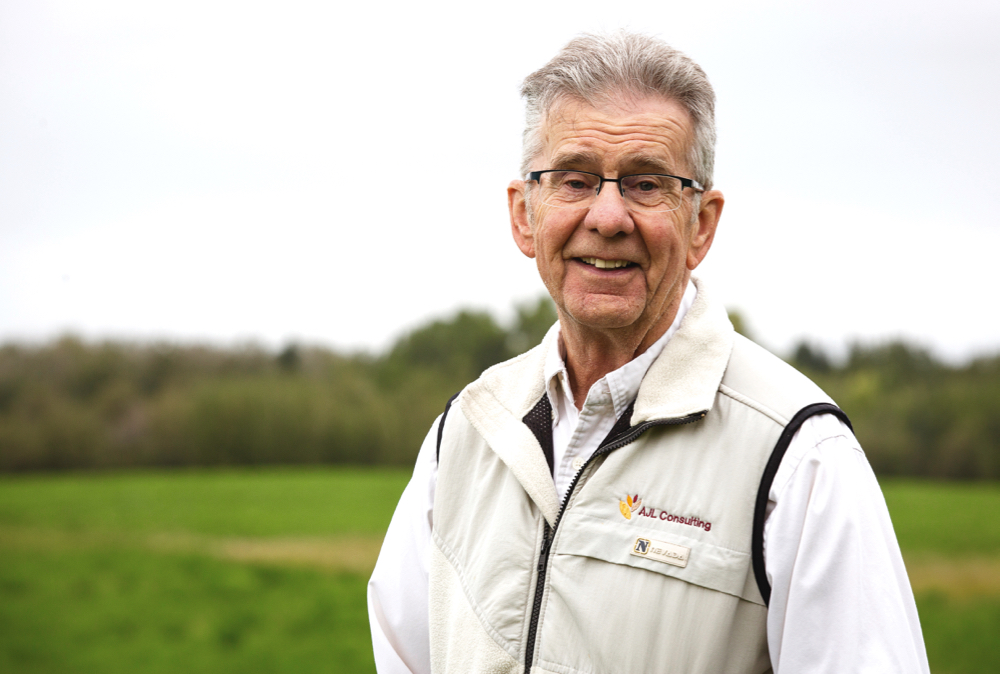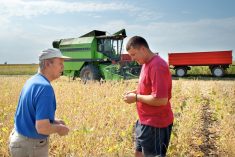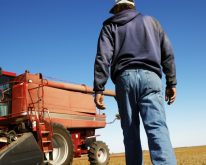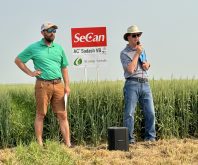American psychologist B.F. Skinner once said: A failure is not always a mistake. It may simply be the best one can do under the circumstances. The real mistake is to stop trying.
This is a story about a farmer who never stopped trying, even as his finances went so horribly off track that he risked losing the farm altogether.
It’s told via Alberta-based farm financial advisor Art Lange who has worked with hundreds of clients over his 16 years, helping farmers in pretty dire financial corners find their way forward.
Read Also

Youth focused on keeping Quebec’s dairy industry strong
In part two of our Making the Future series, Country Guide spoke with Béatrice Neveu from Rawdon, Que. (Read part…
As in a similar article in our October 2020 issue, Country Guide has set aside our usual rule and we’ve agreed not to reveal the farmer’s identity so that he can tell his story and talk about what he sees as the main take-away from it: All isn’t lost, even when it seems to be.
In this case, it was an accountant familiar with the man’s increasingly alarming predicament that put the farmer together with Lange.
The farm was a mid-size operation of 2,000 owned acres with an additional 5,000 rented. The farmer had well-established diversified income streams, including a custom feedlot with capacity for 3,000 animals, plus a small cow-calf operation of his own, and he earned additional income through custom grazing and spraying.
He also had children interested in taking over the farm in the future.
What he didn’t have when Lange met him several years ago was a way out of severe financial gridlock.

“The complete causes of the financial problems are not fully known to me but there was a family dispute,” Lange says, adding he later learned, when the farmer revealed he was divorcing his wife, that during the relationship breakdown, the bookkeeping became neglected.
The farm’s records fell into disarray, and the farmer began to lose track of feed costs and veterinarian bills, and customers were not billed.
The problems were compounded by missed payments and he fell into arrears on loans. By the time he agreed to work with Lange, he was in need of a major infusion of cash for the divorce settlement. And, at the same time, his creditor had also started legal action demanding that he retire the full amount of his loan as well too.
Lange began to work with this client in typical fashion: he prepared a business plan to consolidate all debts and amortize the payments over a specific time frame — in this case 20 years. The plan seemed doable, he recalls.
“But as we found out, the lenders didn’t see it that way.”
Time had run out to negotiate, and they flatly said no when approached with the plan. They’d already turned the file over to lawyers and legal proceedings had started.
“We even asked the lawyer if they could delay things, but they weren’t willing to budge,” Lange says.
What had gone so wrong, of course, is that the farmer had missed his loan payment deadlines, essentially scuttling key factors that affect a lender’s decision at any time.
These are the five Cs of credit, and they include capacity (ability to pay), capital (personal investment or “skin in the game”), conditions (why the borrower needs the money), collateral (the assets backing up the amount of the loan) and last, but absolutely not least, character (past performance on meeting loan payment obligations).
This farmer clearly had reasonable capacity to repay the loan, had good equity, in other words “skin in the game,” and collateral which was his farmland. His conditions were also clear. But there was still that history of missed payments, which affected “character.”
“Missing payment deadlines meant his credit score was negatively affected and thus a major red flag in a lender’s loan evaluation,” Lange explains.
It was at that point Lange began circulating the business plan he’d prepared for the farmer to several major lending institutions, but no one would touch it.
“We couldn’t find one that would take on the risk,” Lange says. “We even approached a couple of equity lenders and we had one almost committed but because of the high interest rate, 10 per cent, and high application fee of $25,000, we decided that that was going to be our last resort.”
They were running out of time, and made one final plea with the farmer’s initial lender, but the lender was adamant.
The farmer had one chance left, and he took it. He approached acquaintances that he knew were well off. He explained his predicament to them, to see if they could lend him enough to repay his major credit.
As it turned out, one of them did agree to help, says Lange.
The private loan came with specific conditions, including loaning the money at a six per cent interest rate and asking the farmer to pledge 600 acres of his land that was free and clear as security.
“In essence, he was re-mortgaging land that he had already paid for,” says Lange.
The silver lining in the refinancing arrangement was that the lender agreed to a clause in the finance agreement that would allow the farmer to buy back the re-mortgaged land any time within five years at the original selling price plus GST.
After this arrangement was made, Lange and his client approached conventional lenders again and this time one came through with a loan that provided him with a considerable operating loan and enough to cover the divorce settlement.
So, after about six months of tense negotiations, the total refinancing package was complete.
After the five-year land buy-back agreement had already expired, the farmer was able to get financing from a conventional lender to pay out his benefactor, too.
So things ended well.
But there are several important lessons to be learned from this farmer’s situation, says Lange.
One is that a private arrangement to borrow money may seem like the absolute last resort, but it’s always worth trying.
“It depends on who you know,” adds Lange, who says such scenarios actually aren’t that uncommon.
He has other clients in financial difficulties whose lenders have urged them to sell land. “I’ve said to those farmers ‘Who do you know that you could sell a quarter to and hopefully get a buy-back clause in five years time?’”
In such cases, it has typically been a family member who has the means and, of course, the willingness to help.
Another important take-away is that this farmer was able to persevere through what obviously were extraordinarily stressful circumstances. The pressure was intense, and at times, it grew even worse. There was always the looming threat of losing the farm until the private lender agreed to help, and Lange said at times he feared the worst was coming. And the man faced other, separate financial challenges through the five-year buy-back term, too.
“One significant one was that one of the cattle owners that the farmer was custom feeding for defaulted on payment,” he said. Then in 2018 and 2019 he could not finish harvesting in the fall and had to leave crops out over the winter resulting in lost grade and yield.
What struck Lange throughout was the farmer’s dogged determination to work through it all. His ability to handle the mounting stress and uncertainty was quite remarkable.
“I thought several times we’d be in a wreck but I just marvelled at his resilience and mental fortitude, keeping his head together through all this.”
In the end, it was his determination to keep the farm to pass on to his children that kept him going.
Lange continues to work with the farmer, preparing annual reviews of his financial affairs, which include an examination of the previous year and laying out a plan for the upcoming one, complete with financial projections. The plan is presented to the farmer’s banker for a review and buy-in, says Lange. It usually happens, sometimes with modifications, he adds.
As with the story shared in Country Guide last fall, Lange tells this story as a cautionary tale.
It’s an important lesson in the value of keeping all financial records up to date so you aren’t at risk of missing payments and know where you’re at at all times.
Another lesson is to arrange your income from grain or cattle sales so that when loan payments are due, you have money in the bank to meet your payment obligations.
The story also hammers home how critically important it is to keep in touch with your lender, Lange says.
“If you won’t be able to make your loan payments on time, talk to your lender ahead of the due date so you can try to make an alternate arrangement,” Lange says. “If the lender won’t work with you, try to find other sources of income or short-term loans.”
Short-term loans can be costly due to their higher rates of interest, so Lange also stresses making sure you keep them short. Alternatively, finding off-farm employment or selling assets, especially if you have a high machinery investment, is another route to take.
Some farmers turn to basically farming on their credit cards. If you have to resort to credit cards for short-term finances, at the very least make the minimum monthly payment so you keep your credit rating intact.
Lastly, but importantly, farmers also need to give themselves time to sort these things out. “If it appears you will have to do a major financial restructuring, allow some time for this,” Lange says. “In this example we’ve been talking about, it took six months.”
Also be aware that you don’t have to figure everything out all on your own. That help may be available through qualified advisors at www.cafanet.ca.
“Financial restructuring is an involved and complicated process,” Lange says. “You will probably need some help.”















